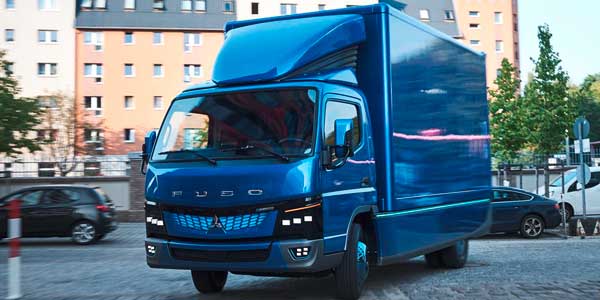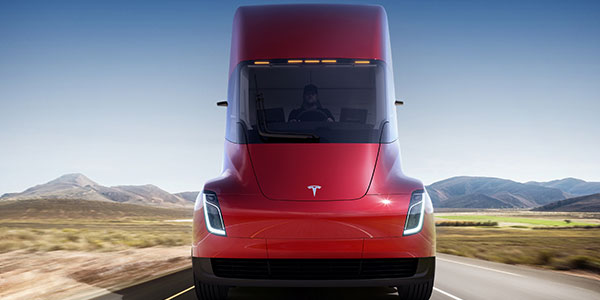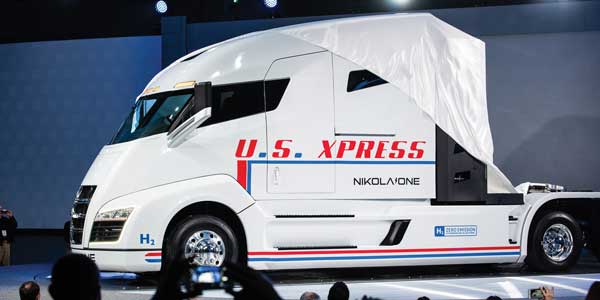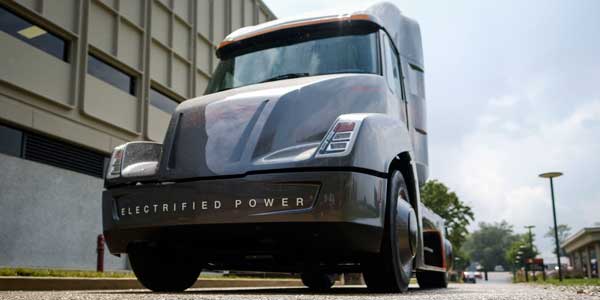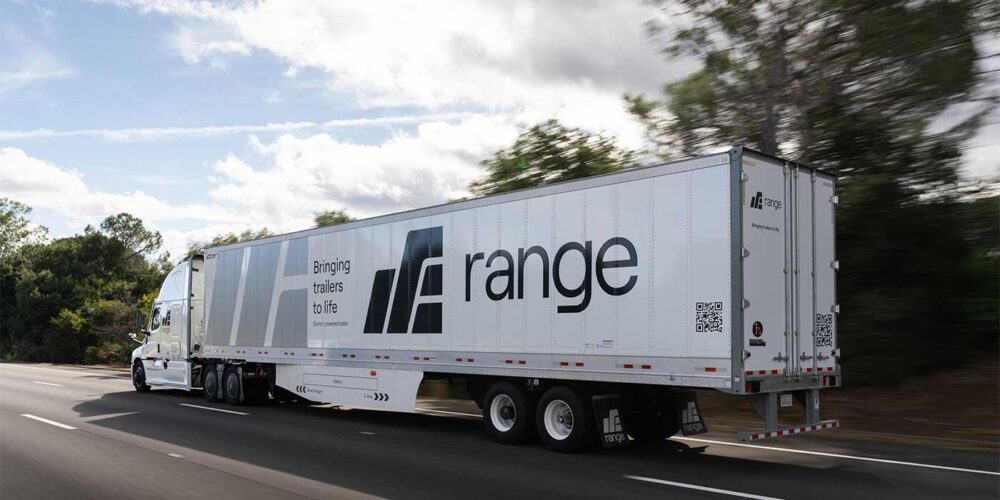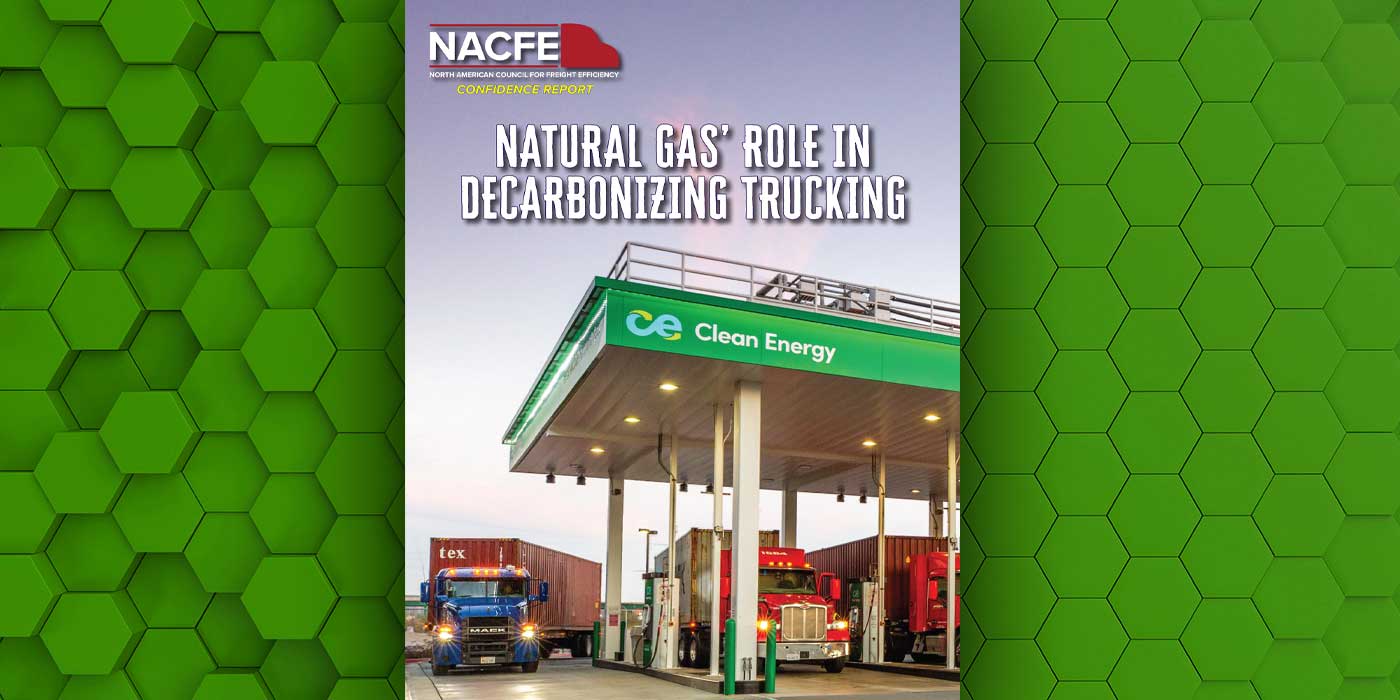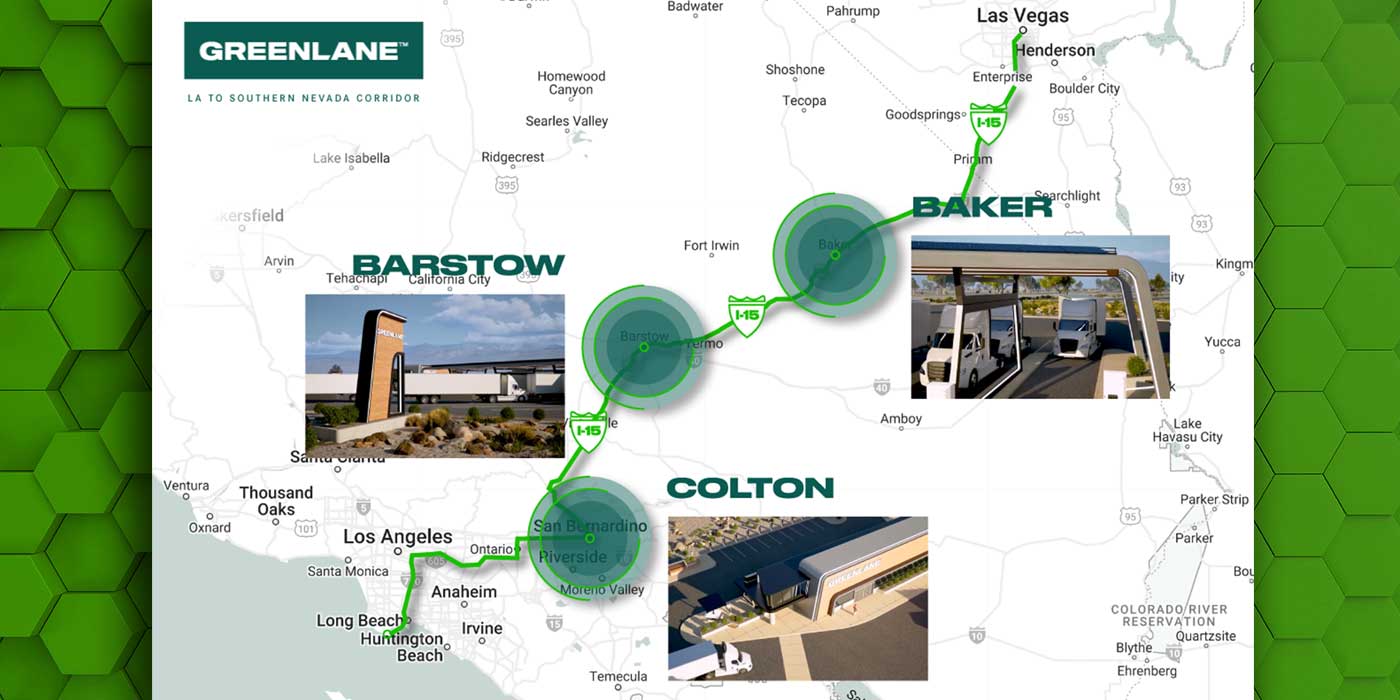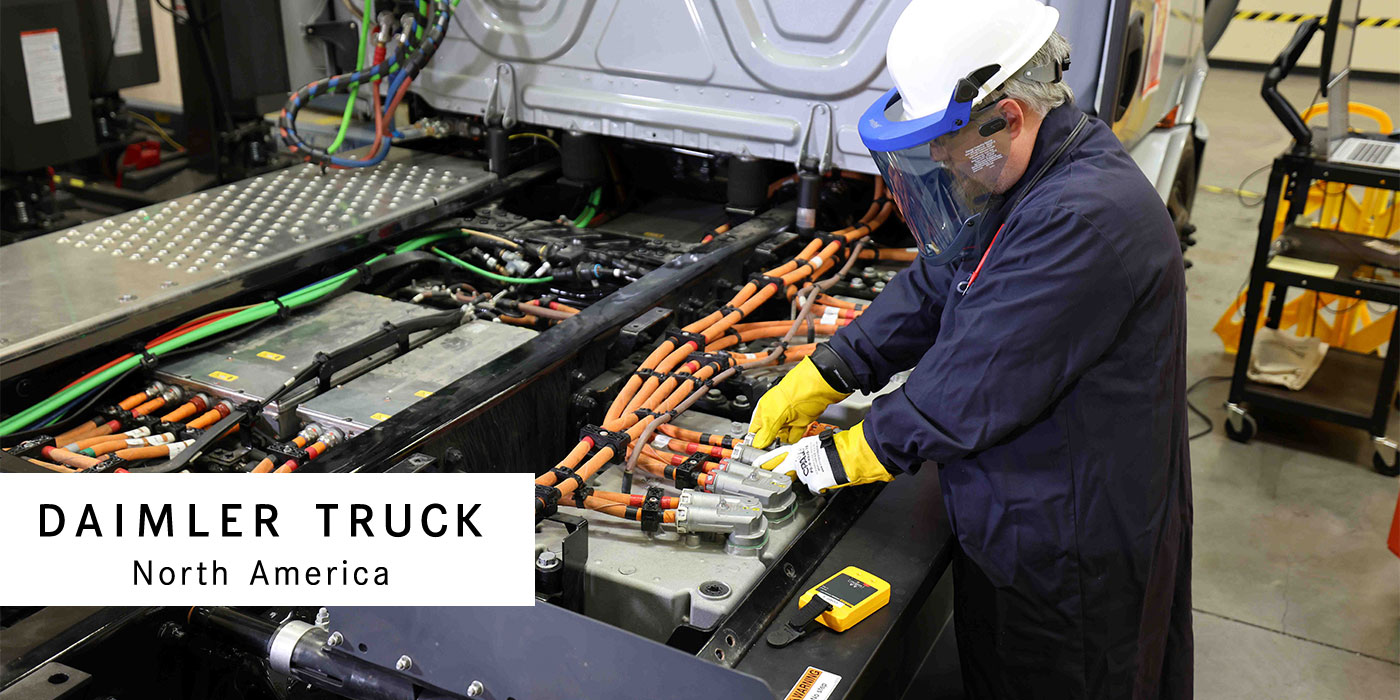As the calendar flipped to 2017, rumors rumbled on trucking’s horizon. Predictions of electrified trucks seemed distant, as if the alternative fuel forecast could suddenly shift and call for more diesel days. And then the first flash of electrification innovation shot across the industry with the unveiling of Mitsubishi Fuso Truck of America’s Class 4 eCanter, an all-electric truck with a 15,995 lb. GVWR and a payload capacity of roughly 9,380 lb. The truck boasts a practical range up to 100 miles, one-hour quick charge capability, and standard eight-hour overnight charge.
From there, the rest of the year was a deluge of electrification announcements—from the Cummins Class 7 Aeos concept truck to Tesla’s Class 8 truck dubbed the Semi—and promises of more electrification innovations to come from the likes of Freightliner, International, and Volvo. Electrification struck like a bolt of lightning—going from theory to product unveiling to trucks on the street just as fast as Tesla claims its Semi accelerates. (For the record: 0 to 60 MPG in 20 seconds with a full 80,000-lb. load, according to the manufacturer.) That’s why Fleet Equipment’s 2017 Equipment Trend of the Year goes to electrification.
Leading the charge
Like all truck equipment, electrification is driven by application. Today, short haul, return-to-base operations are the prime targets. That’s why the industry first saw the unveiling of a Class 4 truck before electrification worked its way up to Cummins’ Class 7 concept vehicle and Class 8 offerings by both Nikola and Tesla. Urban pickup-and-delivery operations are what many OEMs talk about when referencing electric truck applications. In fact, UPS was the first U.S. commercial partner for the eCanter. Clearly, the industry is just starting down the electric truck road.
“We are proud of our Fuso colleagues who are just about to start the delivery to eCanter customers in the United States,” said Andreas Juretzka, leader of Daimler Trucks North America (DTNA)’s e-Mobility initiatives.
Daimler Trucks has led its electrification charge under the Fuso brand, as Fuso followed up the Class 4 eCanter announcement with the unveiling of its E-Fuso Vision One heavy-duty, all-electric concept truck. Yet Daimler has also teased that electrification is coming to its flagship Freightliner Cascadia lineup.
“Do you see that E at the end of ‘Cascadia’ in that slide?” DTNA’s President and Chief Executive Officer Roger Nielsen joked during a press conference. “We’re working on heavy-duty electrification. We are electrifying the new Cascadia and other products within our lineup. We believe electrification is a technology worth exploring. The industry has a lot to learn about it. We need to increase the power density within batteries while reducing weight. We need the real cost of ownership to make business sense.”
Click here to read the fleet reactions to electric truck announcements.
Martin Daum, Daimler member of the board of management with responsibility for trucks and buses, echoed Nielsen’s vision of the technology when he spoke at Expo Transporte in Guadalajara, Mexico—highlighting electrification’s global impact.
“We are ready to go full throttle on eCanter production,” he said. “It shows that emission-free trucks are possible. On the other side, there are limitations. If a technology beats everything, then that’s what everyone would be driving. There’s good reason that the diesel engine is still the best at hauling heavy loads. Right now, the eCanter is a first step into the future toward being emission-free 20 to 30 years down the road.”
Beyond the lack of charging station infrastructure for electric vehicles, Nielsen brought up some of the cost of ownership challenges of electric vehicles, such as the six-to-seven year lifecycles of batteries and the high cost of these batteries. pointing to battery lifecycles of six to seven years, asking: “Does the electric truck have no value at the end of seven years? What about the value for the second or third owners?”
These are just a few of the questions now that electric trucks are rolling into the industry. As Cummins’s Class 7 electric concept truck has been on the road visiting customers and trying its hand at various applications, the engineering team has discovered new electrification challenges.
“You cannot simply ‘scale up’ passenger car electric technology into commercial vehicles,” said Julie Furber, executive director of the electrification business for Cummins. “The needs are very different; the durability and reliability expectations as well as the overall componentry are very different. The North American commercial vehicle market just has different expectations for what vehicles accomplish: the mileage, the weights, and the time spent running the vehicles are greater than what you see in most other industries.”
The Cummins concept truck allows the company to dive into the dollars and cents of applications to find the right value for the technology. “Where the technology and costs are right now, it’s important to know what make sense for the customer and their business needs,” Furber stressed. “People are excited about what the technology can bring, like lower maintenance, easier operation and drivability. But again, the economic benefit has to make sense —and it’s up to us as the powertrain provider to help educate.”
Transposing the Class 4 application currently being tackled by electric trucks to a heavier segment, consider beverage haul tractors.
“That application doesn’t do a huge mileage, but obviously hauls a lot of weight in the form of all the fluids,” said Darren Gosbee, Navistar’s vice president of advanced technologies. “It’s the vocations where you return to base after a defined period. You probably don’t travel a huge amount of miles, but you do a lot of work in that time frame.
The start-stop nature of urban pick-up-and-delivery applications allows for the liberal use of regenerative braking, Gosbee explained. Regenerative braking provides the opportunity to convert momentum back into electrical energy. If you’re in a duty cycle that has a lot of stops and starts, then that is the opportunity where you can recapture a lot of used energy. That means the truck can go further on a charge and you get more bang for your electric buck.
“Today, however,” Gosbee said, “looking at Class 8 applications where trucks are cruising around 60 to 65 MPH, those line-haul applications are not suited to electric propulsion.”
But tomorrow, electric propulsion might be up to the task. That’s why International is work on a medium-duty electric truck to launch in the 2019-2020 time frame.
Volvo is also investing, developing, proving and moving toward industrialization of battery electric trucks. Volvo has primarily been focusing on bus applications where the duty cycles align with battery demands and designated routes are conducive for development of recharging infrastructure. As that technology has developed, Volvo has applied it to medium-duty commercial truck models and operations, and has ran pilot projects with plug-in hybrid electric vehicles with select customers in zero emission zones.
“We’re taking a stepwise approach on the path, delivering savings to vehicle owners along the way. Shore power—available on VNR and VNL series sleeper models—APUs and anti-idling devices are common on our production models today and we will see greater electrification of accessories, possibly stop-start functionality,” said Keith Brandis, Volvo Trucks North America’s vice president of product planning. “We have programs testing hybrid and plug-in hybrid technologies, and ultimately we see commercialization of battery electric vehicles as the final step in the electrification value chain.
“We do anticipate fully electric vehicles being part of the heavy-duty vehicle landscape in the future,” Brandis said, “but there are a number of hurdles we must overcome along the way.”
Plugged in
The need for electric vehicle charging infrastructure is a key variable within the cost of ownership equation. “Infrastructure could be a major barrier in the future if we don’t address it quickly,” said Cummins’ Furber.
“Range and charging options are considerations that would affect a fleet’s operations and those factors must be taken into consideration and addressed for battery electric vehicles to provide the greatest value to a fleet,” said Volvo’s Brandis.
For the foreseeable future, the electric vehicle value is going to greatly depend on the availability of charging infrastructure. As the fleet manager, it’s up to you to scout your application locations to determine if charging stations are available. The reality is that for you to really reap the benefits of electric trucks, you’re going to need a charging station at your home base, and your trucks are going to have to come in for the night to get a full night’s charge.

